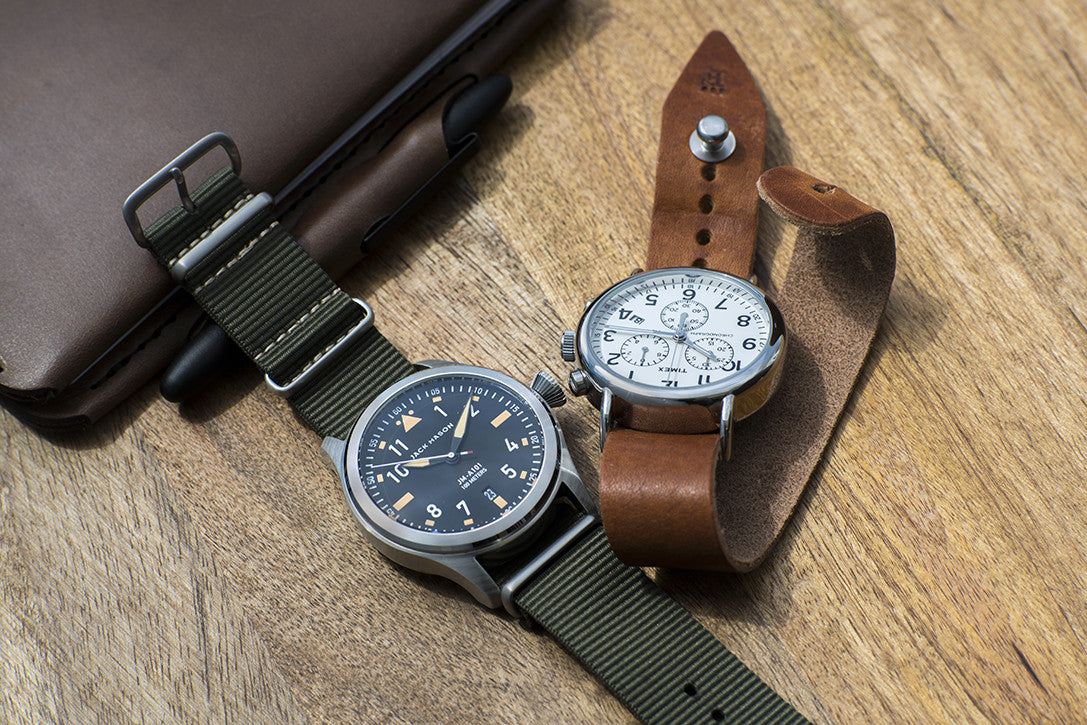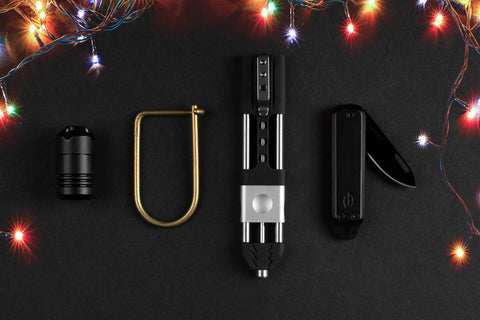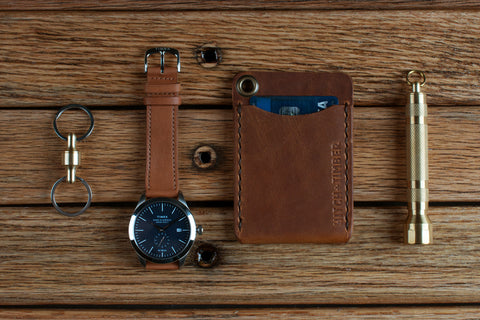The History of Wrist Watches

Humanity's ability to mark the passage of time is one of the more unique developments that is exclusive to our species as a whole. Sure, your average critter can tell that day is turning into night and vice versa, but being able to consciously tell at what rate we cycle between the light and the dark - as well as the speed at which months, seasons, and years progress - is something distinctly human. The, for lack of a better word, invention of time has shaped our world in far more ways than can be reasonably mentioned here. And it continues to pervade the ways that we perceive the passage of our individual lives and humankind as a group.
We are not, however, infallible. So we needed something to assist us in the telling of the time. Being the intrepid creatures that we are, we invented ways of marking the passing of hours, minutes, and - eventually - seconds, milliseconds, etc. that were more reliable than our own estimations. Then, not entirely contented by the results, we improved upon those inventions. And so on and so forth until here we are today, still trying to make things better, easier, more available, and more accurate.
Now, we wear much more complex miniaturized versions of those time-telling devices on our wrists. But, there's a lot of history and development that took place between then and now. And, while we can't possibly note all of it, we've endeavored to put together a reasonable account of the events that led up to the creation of wristwatches and the story of how they came to be what they are today.
Dialed In
The invention of the sundial actually goes back before recorded history. That means we've been measuring time for longer than we've been recording it. So it could be possible that the telling of time existed before language. All speculation aside, by around 3,500 BCE, the sundial was commonplace in both China and Egypt - two of the oldest documented civilizations. Around 600 BCE, an inventor by the name of Anaximander had created the first Greek metal sundial.
For reference, the Merriam-Webster Dictionary defines a sundial as, "a device that is used to show the time of day by the position of the sun and that consists of a plate with markings like a clock and an object with a straight edge that casts a shadow onto the plate." In laymen's terms, a sundial is a clock that uses the movement of a shadow to indicate the time.
The sundial, however, has some very crucial drawbacks. For example, different longitudinal locations elicit different shadow lengths and, as a result, different speeds at which the dial's shadow hand moves. So, in order to consistently display the correct time, a sundial and its markings must remain stationary at all times. On an even more obvious note, sundials - by definition - don't work at night.

Jack Mason Aviator 3-Hand
Sands of Time
To fill the gap in time-telling between when the sun sets and when it rises again, people began to tinker with alternative methods of measuring the passing of moments. By 1500 BCE, candles which burned at a set documented rate were invented. At about the same time, the hourglass became a common time measurement device. Around 1000 BCE, water clocks - which worked in much the same way as the hourglass - became popular. It wasn't until 1100 CE that mechanical clocks began to replace their water counterparts.
Constructed of a series of pulleys, counterweights, and bells (the word clock actually derives from the French for bell), mechanical clocks began to pop up all over the known world, but they were not any more accurate than the water clocks that they had replaced. They could lose a half an hour or more on any given day. And they stayed inaccurate until Galileo discovered the pendulum in 1594.
Truth be told, Galileo didn't actually use his discovery to create a better clock. It took a Dutch man named Christian Huygens to realize the implication of Galileo's discovery in 1657, a whopping 63 years later. His mechanical clock, which only lost up to 15 seconds a day, was the world's first reasonably accurate clock. While the pendulum clock exploded in popularity, it was still too unwieldy to ever be considered even remotely portable.
First Watch
In 1505, a German locksmith by the name of Peter Henlein invented the world's first portable pocket-sized clock. It acquired the name watch from sailors who used it to replace the hourglasses they used to time their 4-hour shifts of duty, or watches. And the name has stuck ever since. This egg-shaped design eventually evolved into the much more common flat pocket watch and, by 1675, they had grown fashionable enough to become commonplace. And they would remain the dominant form of carry-able watches for the next 240 years.
Over that span, these pocket watches would traverse the same path as their large mechanical predecessors. Because of the newer technology and smaller size, pocket watches were, in some cases, even more inaccurate than the water clocks of old, sometimes losing hours a day. Watch makers, tinkerers, and inventors continued to develop advancements that would lend greater and greater accuracy, until they were just as reliable as full-sized pendulum clocks.
Weekender Chronograph
Second Nature
Some say that the first wristwatch was created by Abraham Louis-Breguet in 1810. Famous watch makers Patek Philippe credit themselves with the creation of the world's first wristwatch in 1868. But its popular worldwide emergence can be traced to the beginning of the 20th century.
Originally, the wristwatch was overlooked in America as a fad for women and something of a joke that would eventually pass. They were thought to be impossibly inaccurate because of their size and something as likely for a gentleman to wear as a skirt. but that was changed drastically after the outbreak of WWI, in 1914.
American soldiers and aviators, whilst fighting through Europe, realized an intriguing commonality with their European counterparts; they had begun strapping their old pocket watches to their wrists for easier and quicker access. Keeping a close eye on the time was - and still is - a very important thing for an aviator or soldier, as it ensures that they are carrying out their mission as planned. And, as the first major war to incorporate radio transmissions into combat, accurate timing was of the utmost importance.
In 1916, at about the halfway point of the war, the New York Times published an article admitting that the wristwatch was more than just a passing fad and was, in fact, valuable and important. From then, the pocket watch began to fall out of fashion and the wristwatch grew into the standard means of time-keeping for both men and women alike.
1892: Swiss watch makers Omega introduce their first wristwatch, the world's first equipped with minute-repeating - a wearable clock with a chime.
1905: Wilsdorf & Davis, which would go on to become Rolex, is established in London, England. Their early wristwatches are sold to jewelers who would rebrand them under their own names.
1908: The Rolex brand is created by Hans Wilsdorf.
1913: Seiko creates the first Japanese wristwatch
1916: Patek Philippe introduces their first five-minute repeating complicated women's wristwatch.
1917: The British War Department begins standard issuing wristwatches to soldiers.
1923: John Harwood, a British watch repairman, patents the self-winding wristwatch.
1924: Patek Philippe creates their first minute-repeating men's watch for automotive engineer, Ralph Teetor, the man who invented cruise control.
1925: Patek Philippe invents the world's first known perpetual-calendar wristwatch.
1927: Rolex proves that their Oyster watches are waterproof by sending one across the English Channel on the wrist of swimmer Mercedes Gleitze. After 10 hours in the water, the watch still works perfectly.
1930: Wristwatches outnumber pocket watches at a 50:1 ratio
1931: Rolex introduces the world's first self-winding watch with a perpetual rotor. This technology still permeates the watch world today.
1932: Omega begins offering the world's first commercially available diver's watch.
1940: Omega industrializes advances in water-resistance, shock-proofing, and anti-magnetism.
1948: Patek Philippe begins researching possible electronic applications in watch making.
1953: Rolex launches their now-famous Submariner watch.
1957: Omega launches their Seamaster and Speedmaster wristwatch lines. Casio Computer Co. is established, though their first watch will not hit the market until 1978.
1959: Seiko, in conjunction with their daughter-company Epson, begins developing the first ever electric quartz watch movement.
1965: The Omega Speedmaster becomes the official watch of NASA.
1969: Seiko begins mass producing their quartz movement electronic watch. Neil Armstrong is the first man to walk on the moon - he does so wearing an Omega Speedmaster.

Tsovet SVT-FW44
...And Counting
Watch styles and technologies have since fallen in and out of favor - and will likely continue to do so - but the core spirit of the wristwatch is as intact today as it was after WWI. Though plenty of watch makers and their companies have emerged and gone defunct just as quickly, some of the pioneers of the industry are still around and going strong. James Bond wears an Omega. Rolex continues to be widely lusted after. And Patek Philippe still stands for the utmost in quality and craftsmanship. But none of them hold a monopoly on wristwatches.
Thanks to the globalization of the marketplace and the increased availability of quality technology, there are a multitude of designers and watch makers that have popped up in recent years, many of whom create very high-quality time pieces in a wide variety of price points and styles. From tactical military watches to the finest luxury yachting watch, any style is available if you're just willing to look for it. The legacy of the wristwatch continues onward and has become an important part of the everyday carry world as a piece that illustrates both personal style and reliable utility. If you havent already added one to your EDC gear, remember, the clock is ticking.
© Photography by Gallantry







